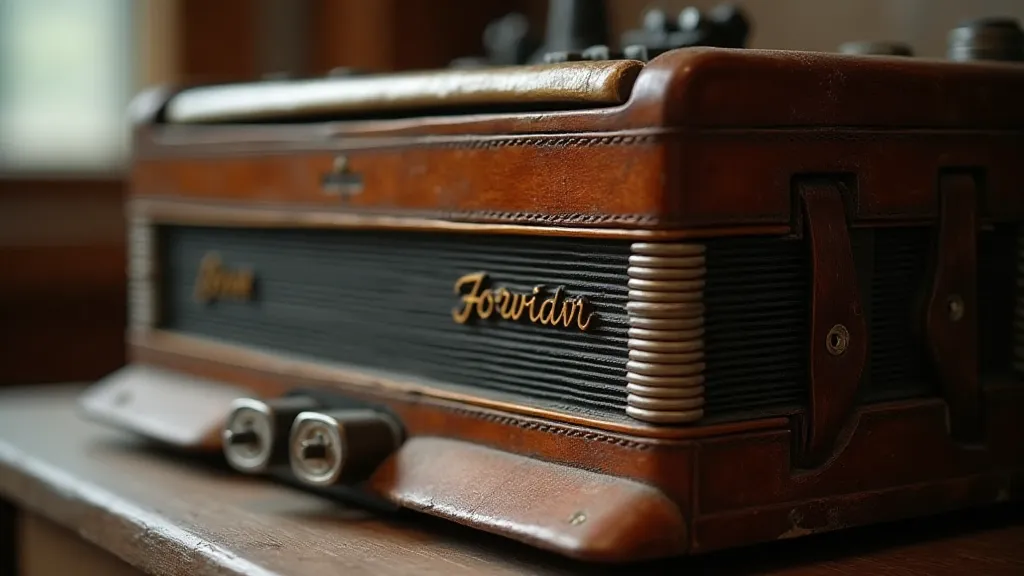Whispers Across the Aether: Crafting Antennas for the Fading Signal
There’s a certain melancholy beauty in the fading signal. It’s not about brute force, the roar of kilowatt power pushing its way across the globe. It's about listening. Truly listening. Like the faint, breathy sigh of an antique accordion – an instrument often overlooked, its keys worn smooth by countless hands, its bellows aged but still capable of producing a poignant melody – the weak signal speaks of distance, of atmosphere, of the sheer improbability of connection.
My grandfather, a taciturn man of few words, owned one such accordion. It sat in a corner of his workshop, a silent sentinel among tools and scraps of wood. He rarely played it, but the scent of leather and aged wood always transported me to a time when communication felt slower, more deliberate. I remember trying to coax a tune from it, the bellows protesting with a wheeze, the notes hesitant. It was a lesson in patience, a lesson in respecting the limitations of a system. That's what draws me to weak signal propagation in amateur radio – it’s the same principle applied to electromagnetic waves.
The Allure of the Fading Signal: More Than Just a Signal
Most ham radio projects focus on maximum range. Building a Yagi-Uda beam or a multi-element array is certainly satisfying, a testament to engineering prowess. But what about the signals that just barely make it? The whispers carried on the edge of the atmospheric window? Those signals tell a different story – a story of resilience, of propagation anomalies, of the delicate dance between the ionosphere and the sun. To extract those whispers, you need to think differently about antenna design; you need to prioritize sensitivity over sheer power.
This isn’t just about building an antenna; it's about building a connection to the universe, to the history of radio itself. Early radio operators understood this intimately. They built simple wire antennas, carefully tuned to resonance, listening for the faintest echoes from across the ocean. Their ingenuity was born of necessity – there were no sophisticated simulators or microwave test benches. Just a receiver, a wire, and a whole lot of perseverance.

The Philosophy of Low-Noise Design
The first step in capturing those fading signals is minimizing noise. Noise is the enemy – it masks the weak signal, making it indistinguishable from the background clutter. This isn't solely about using low-noise amplifiers (LNAs), although they certainly have their place. It’s about the entire antenna system, from the ground plane to the feedline. A poorly grounded antenna, even if electrically short, will act as an unintentional receiver for interference – hum from household appliances, noise from nearby electronics, the ever-present broadband noise of the environment.
Grounding isn’s simply about connecting to earth ground. It’s about creating a *controlled* ground plane, a carefully managed reference potential. For many weak signal applications, a counterpoise system – a network of wires radiating from the antenna base – is far more effective than a simple ground rod. The length and spacing of these wires are critical, and experimentation is key. The goal isn't to eliminate ground currents entirely, but to control their flow and minimize their impact on the signal.
Antenna Designs for the Whisper
Let's explore some antenna designs particularly well-suited for extracting those weak signals. Forget the big beams for a moment. We’re focusing on antennas that prioritize noise rejection and signal integrity.
The Simple Dipole: A Foundation
The dipole remains a cornerstone for a reason. Its simplicity belies its versatility. But to extract the faintest signals, a standard folded dipole just won't do. Consider a “batwing” dipole, with wires extending outwards at a wide angle. This broadens the beamwidth, increasing the chances of catching a signal from an unexpected direction. Furthermore, careful attention to the feedpoint impedance is crucial. A perfectly matched dipole minimizes reflected power and maximizes signal transfer to the receiver.
Ground Plane Antennas: Versatility in Space
Ground plane antennas are remarkably effective when space is limited. The radials – the downward-extending wires – form the ground plane, providing a controlled reference potential. The number and length of these radials are critical. More radials generally provide better performance, but the goal is to optimize their configuration for minimal noise pickup. Experimentation with different radial lengths and angles can yield surprising results. A single element ground plane antenna, especially when constructed with well-matched radials, can rival the performance of larger antennas in weak signal conditions.

Loop Antennas: Noise Rejection Masters
Small loop antennas (SLAs) are known for their excellent noise rejection capabilities. Their inherent directional nature, particularly at lower frequencies, helps to null out unwanted signals. While their gain is modest, their ability to discriminate against noise is invaluable when chasing the faintest signals. Building a well-balanced loop antenna requires precision – the loop must be perfectly circular, and the feedpoint connection must be mechanically robust. The lower the frequency, the more critical this becomes.
Wire Antenna Construction: Precision is Paramount
Regardless of the antenna design, the quality of the wire itself matters. Use stranded wire, and ensure that all connections are mechanically sound and electrically reliable. Oxidation is the enemy – keep your connections clean and protected. Use high-quality coaxial cable, and minimize cable losses. Every detail contributes to the overall performance of the system.
The Resonance of Persistence
Building antennas for the fading signal isn't just about following plans. It’s about understanding the underlying principles of radio propagation and antenna theory. It's about embracing the spirit of experimentation, the willingness to tinker and adjust until you find what works best. Like the subtle changes in tone and phrasing that transform a simple accordion melody into a haunting masterpiece, the small adjustments you make to your antenna system can profoundly affect your ability to hear the faintest whispers across the aether.
That's the beauty of amateur radio – the endless quest for knowledge, the satisfaction of overcoming technical challenges, the shared experience of connecting with others, even when separated by vast distances and challenging conditions. It's a connection built not on brute force, but on patience, ingenuity, and a deep appreciation for the subtle beauty of the fading signal.






